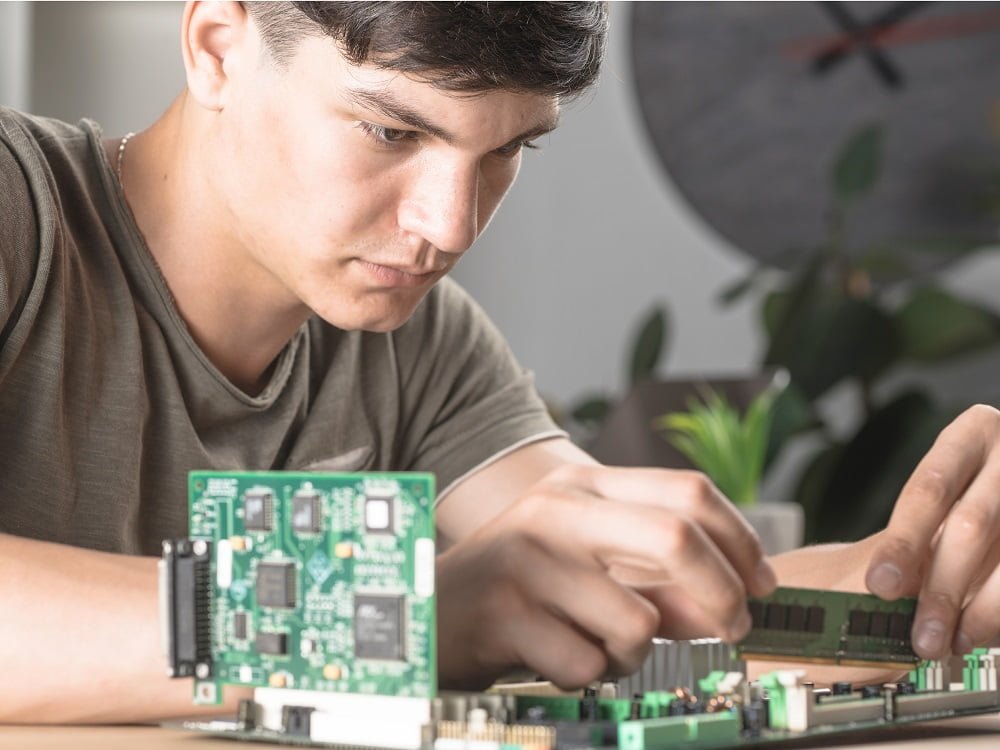A motherboard is the heart of a computer. It is the central circuit board to which all other components connect. The performance of a computer depends greatly on the quality of its motherboard. So, it’s important to know how to replace one if it goes bad. This article will show you how to do just that.
If you’re experiencing unexplained crashes, freezes, or reboots, it’s possible that your motherboard is failing. These symptoms can also be caused by other hardware problems, so you’ll need to do some troubleshooting to narrow down the culprit. In this blog post, we’ll show you how to diagnose a failing motherboard and how to replace it if necessary.
First, check for obvious signs of physical damage to the motherboard. If there are any burned-out or blown-up components, it’s likely that the motherboard is toast. Even if there’s no visible damage, it’s possible that the motherboard has developed a short circuit which can cause all sorts of problems.
Next, take a look at the BIOS settings. If the BIOS has been reset to defaults or is otherwise not working correctly, this could be a sign that the motherboard is failing. You can also try clearing the CMOS battery to see if this fixes the problem.
If you’re still experiencing issues, it’s time to run some diagnostic tests. There are a number of tools available that can test for hardware problems, including memtest86+ and Prime95. If either of these tests detects an error, it’s very likely that your motherboard is faulty and
Tools and materials
In order to replace a motherboard, you will need a Phillips screwdriver, a flathead screwdriver, an anti-static wristband, and a few other tools. You will also need the new motherboard, which should come with a manual. Make sure that you have all of the necessary tools and materials before beginning the replacement process.
Preparation
It’s time for a new motherboard. Whether you’re upgrading to a faster model or replacing a faulty one, the process is largely the same. Here’s what you need to do to get your PC up and running with a fresh motherboard.
1. Back up your data! This is always the most important step when making any change to your computer. Be sure to have a recent backup of all your important files before continuing.
2. Disconnect everything from your current motherboard. This includes all cables, storage devices, expansion cards, etc. It’s important to remove everything so that nothing is accidentally damaged during the installation process.
3. Remove the old motherboard. This will likely involve unscrewing a few screws and/or opening up your computer case. Once the old motherboard is out, carefully remove any remaining thermal paste from the CPU and/or GPU (if applicable).
4. Install the new motherboard. This usually just involves screwing it into place and connecting all the various cables (power, storage, etc.). However, be sure to consult your motherboard’s manual for specific instructions on installation.
5. Reinstall your operating system and any other software you need. This will likely involve
Motherboard removal process
Whether you’re upgrading your old motherboard or replacing a damaged one, the process of removing and installing a motherboard is the same. Here’s a step-by-step guide to help you get the job done.
1. Prepare your work area and gather the necessary tools. You’ll need a Phillips screwdriver, an anti-static wrist strap (if you have one), and something to prop up the case so you can easily access the inside.
2. Disconnect all of the cables from the back of the case. This includes the power cord, any USB or Ethernet cables, and any audio or video cables.
3. Remove all of the screws that are holding the motherboard in place. There are typically several screws around the perimeter of the board, as well as ones that hold down expansion cards like the graphics card.
4. Carefully remove the motherboard from the case, being careful not to flex or bend it too much. If you’re reusing the same motherboard, take note of where all of the mounting holes are so you can put it back in correctly.
5. If you’re installing a new motherboard, lay it down in the case and line up all of the mounting holes
Installing the new motherboard
“Now that you have your new motherboard, it’s time to install it. This process can be a little daunting, but we’re here to help. Here are a few tips to get you started:”
1. Before you begin, make sure you have all the necessary tools and parts. You’ll need a Phillips screwdriver, thermal paste, and standoffs (if your new motherboard doesn’t come with them).
2. Unplug everything from your old motherboard, including the power cable. You should also remove any installed expansion cards.
3. If your old motherboard was mounted in a case, remove it from the case. If it wasn’t mounted in a case, skip this step.
4. Take a look at your new motherboard and find the mounting holes. These are the holes that correspond to the standoffs on your case (or that would have been used if your old motherboard was mounted in a case).
5. Apply thermal paste to the processor on your new motherboard. This will help transfer heat away from the processor and keep it cool.
6. Place your new motherboard in your case (or on the standoffs if you’re not using a case) and start screw
Post-installation steps
After you have installed your new motherboard, there are a few post-installation steps that you should take to ensure optimal performance. First, update your BIOS to the latest version. This will ensure that your new motherboard is compatible with all the latest hardware and software.
AMD Ryzen 7000 CPUs: 6 essential things to know
Next, check all your drivers and make sure they are up to date. This includes your video drivers, sound drivers, and any other drivers that your system may need. Finally, reboot your system and check for any stability issues. If everything is working properly, you should be good to go!










